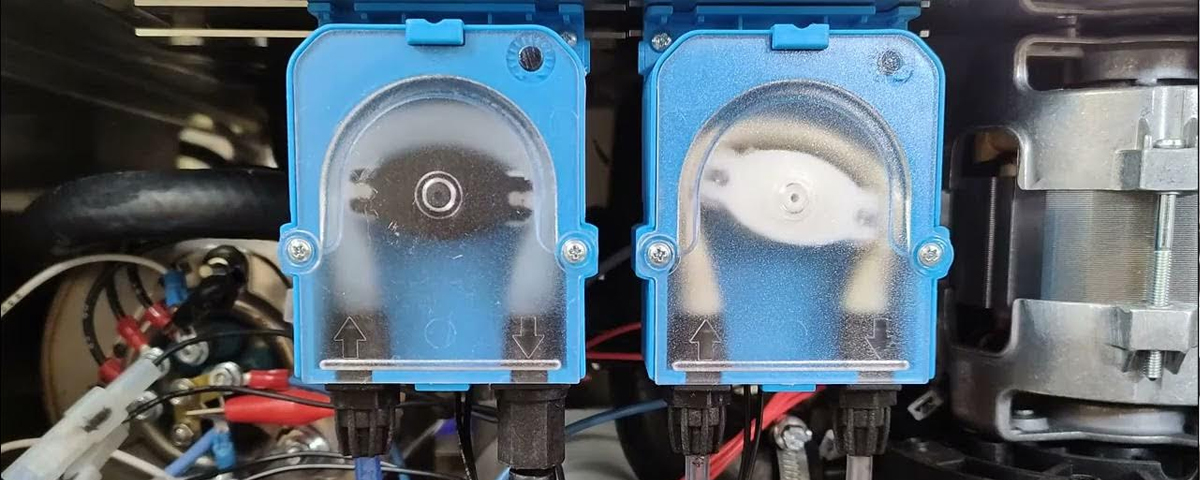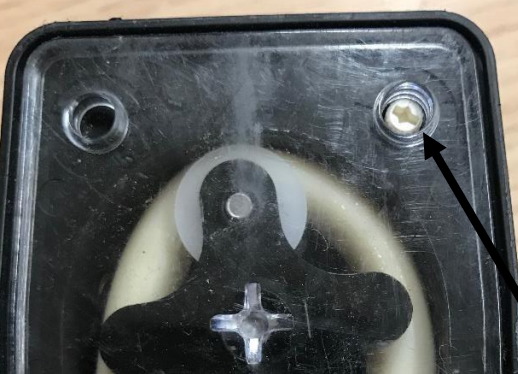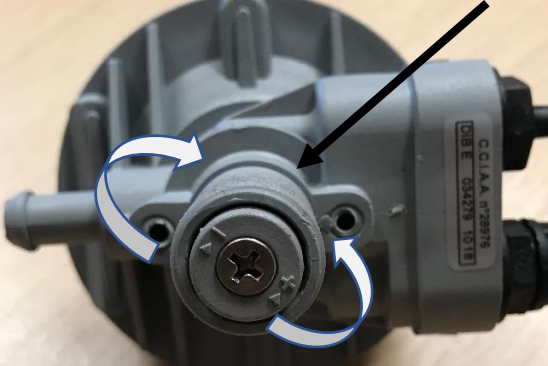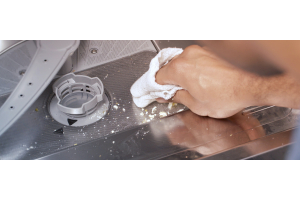
Introduction:
Some machines are equipped with an electronic (peristaltic) pump for dispensing detergent and a diaphragm pump for dispensing rinse aid. These pumps utilize a diaphragm mechanism to draw and deliver chemicals during each wash cycle. Priming and adjusting the dosage of these pumps require specific steps to ensure optimal performance.
When you first install your machine or if the machine is operated without chemicals attached it is essential to prime the pumps and ensure they are operating correctly and free from airlocks.
Below are detailed instructions for priming and adjusting the detergent and rinse aid pumps on commercial dishwashers and glasswashers with a peristaltic rinse aid pump.
Watch This Video On How To Adjust Dosing On Asber Tech Line Glass/Dishwashers:
Locating & Identifying the Pumps:
- Locate the pumps. These are usually at the front of the machine behind the services panel, which can easily be removed by unscrewing the two screws at the bottom.
- The Identify the Pumps: Upon removing the bottom front panel, you'll find two pumps: one for detergent and the other for rinse. You can discern their functions based on their respective destinations - the detergent pump directs to the tank, while the rinse pump leads to the boiler.
- Prepare for Priming: Ensure the water hose is connected to the mains supply but remains turned OFF. Switch the machine on to provide power to the pumps.
Priming The Chemical Pumps
- Adjust Detergent Pump: Using a small flathead screwdriver, turn the small round dial on the detergent pump (typically found in the top right-hand corner) clockwise to the FULL position.

- Prime the Rinse Pump: Using a Philips screwdriver, push the dial into the centre of the rinse pump. This action contracts the diaphragm and manually pulls the chemical through the dosing lines. Once the chemical reaches the pump, push the dial into the pump an additional 5 times to ensure the chemical is in the boiler when the water is turned on.

- Adjust Dosage: The rinse aid dosage can be controlled by turning the dial on the front clockwise to reduce or anti-clockwise to increase. Similarly, adjust the detergent dosage by turning the small dial in the corner of the pump clockwise to increase or anti-clockwise to reduce. It is advisable to set the pump halfway between maximum and minimum, although this can be adjusted to preference.
- Final Adjustment: Once both lines are primed and dosages are adjusted, switch the machine OFF. Make any necessary adjustments accordingly.
Note: Any adjustments made to the rinse aid may take up to 10 washes for results to fully change, due to the volume of water being treated.
Conclusion:
By following these steps, you'll ensure that your detergent and rinse aid dispensers are properly primed, leading to optimal performance of your commercial dishwasher or glasswasher.







